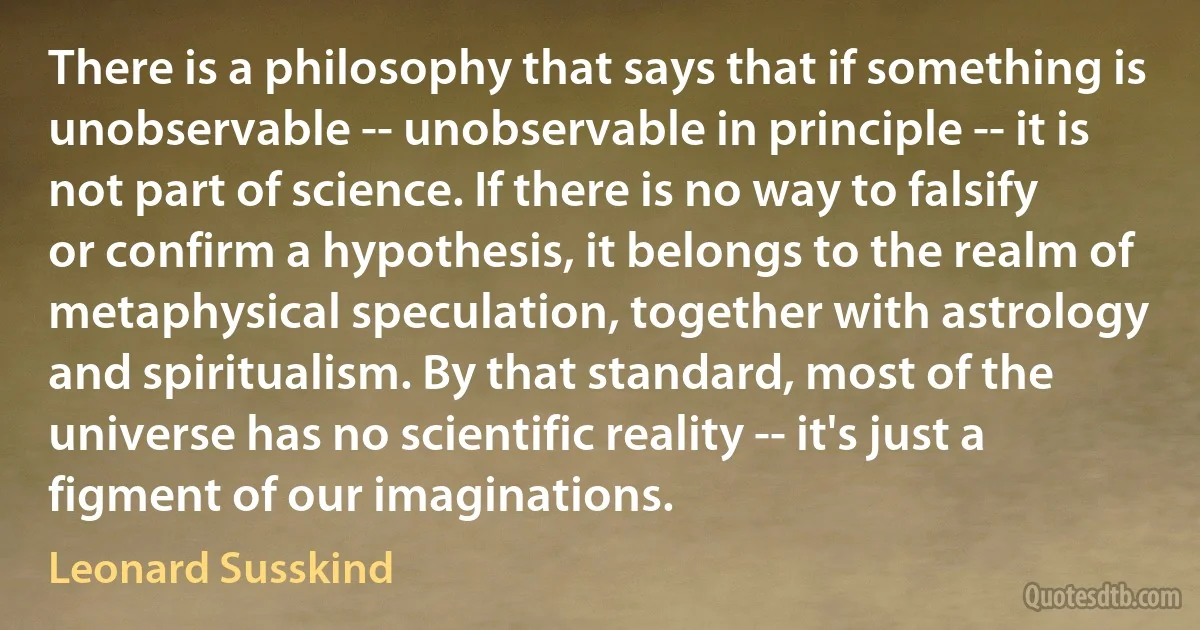Unobservable Quotes
The Resurrection is the revelation: the disclosing of Jesus as the Christ, the appearing of God, and the apprehending of God in Jesus. The Resurrection is the emergence of the necessity of giving glory to God: the reckoning with what is unknown and unobservable in Jesus, the recognition of Him as Paradox, Victor and Primal History. In the Resurrection the new world of the Holy Spirit touches the old world of the flesh, but touches it as a tangent touches a circle, that is, without touching it. And, precisely because it does not touch it, it touches it as its frontier - as the new world.

Karl Barth
A law explains a set of observations; a theory explains a set of laws. The quintessential illustration of this jump in level is the way in which Newton's theory of mechanics explained Kepler's law of planetary motion. Basically, a law applies to observed phenomena in one domain (e.g., planetary bodies and their movements), while a theory is intended to unify phenomena in many domains. Thus, Newton's theory of mechanics explained not only Kepler's laws, but also Galileo's findings about the motion of balls rolling down an inclined plane, as well as the pattern of oceanic tides. Unlike laws, theories often postulate unobservable objects as part of their explanatory mechanism. So, for instance, Freud's theory of mind relies upon the unobservable ego, superego, and id, and in modern physics we have theories of elementary particles that postulate various types of quarks, all of which have yet to be observed.

Johannes Kepler

